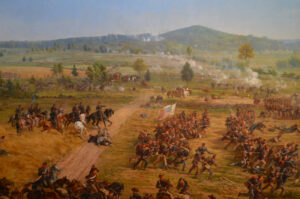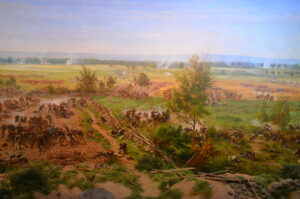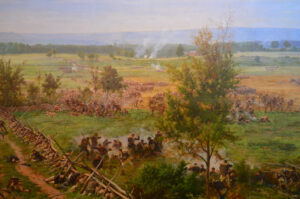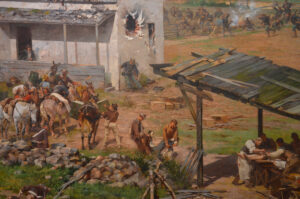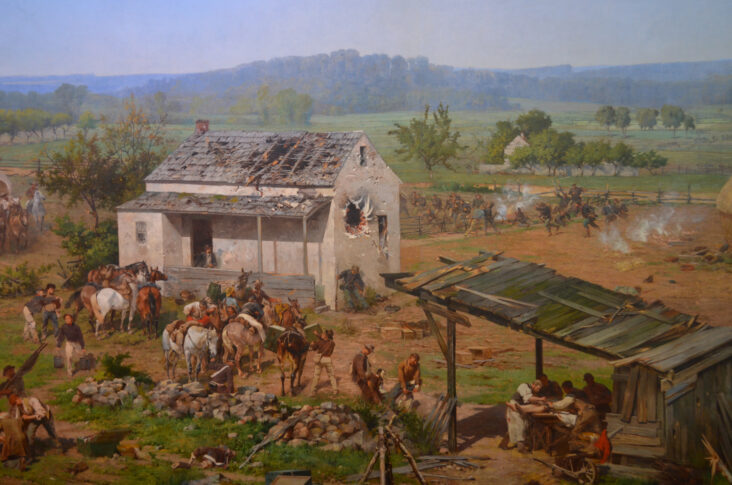The Battle of Gettysburg, popularly known as simply the Gettysburg Cyclorama, is a cyclorama painting by the French artist Paul Philippoteaux depicting Pickett’s Charge.
(I chose to include the painting because you cannot create a website about the monuments at Gettysburg and not help but appreciate the artistic merit on display in the park, including the cyclorama.)
A cyclorama is a type of 360° cylindrical painting. The version that hangs at Gettysburg National Military Park is a relatively recent (2005) restoration of the version created for Boston, Massachusetts and measures 42 feet (13 m) high and 377 feet (115 m) in circumference.
To create the painting, Philippoteaux enlisted a team of five assistants (including his father) and interviewed battle notables including Winfield S. Hancock, Abner Doubleday, Oliver O. Howard, and Alexander S. Webb. He also spent several weeks in April 1882 in Gettysburg; Philippoteaux also had noted Gettysburg photographer William H. Tipton take three panoramic photos of the area that is today Hancock Avenue.
The work opened to the public in Chicago on October 22, 1883. General John Gibbon commented on it favorably; many veterans are said to have found it so realistic that they wept. Four originals were created.
On September 3, 1912, ground was broken for a new cyclorama building on Baltimore Street in Gettysburg near what is today the 1863 Inn/Holiday Inn. The painting was purchased by the National Park Service in 1942 and moved to a new building beside the Visitor Center where it was displayed from 1962 through 2005.
In 2005, the cyclorama underwent it’s third major restoration. The restored Cyclorama exhibition was reopened to the public in September 2008.
The pictures presented here were taken during the National Park Service’s “Night With the Painting” in 2017. During “Night With the Painting,” the house lights are turned on so you can see the painting in its full splendor. You can click on the images to view them at a larger size. If you’ve never had the chance, I hope this inspires you to visit Gettysburg and see the painting in person! (And if your visit conincides with “Night With the Painting” — it’s absolutely worth it. You’ll get to walk up to the painting, see it up close enough to see the individual brush strokes, see how it is hung, the lights, everything. It’s a very neat experience and I highly recommend it!)
